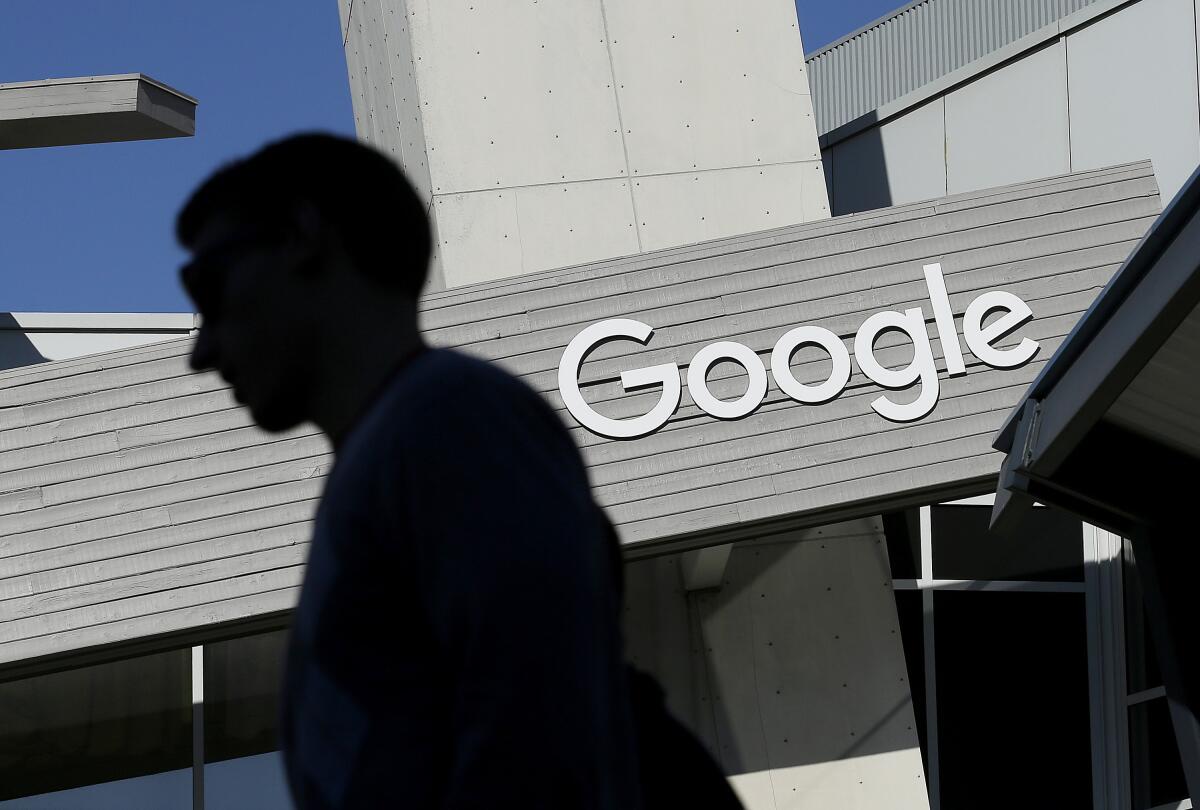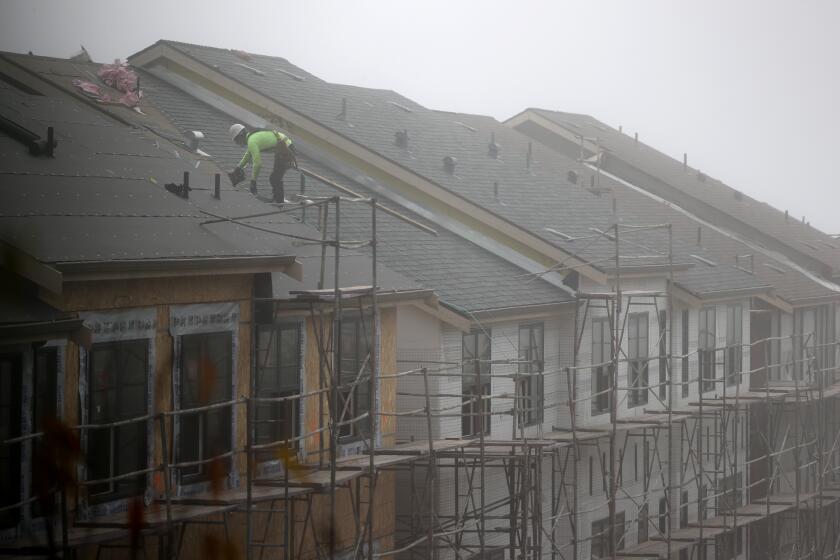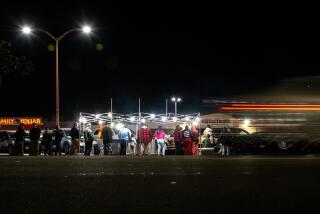Trump immigration restrictions expected to impact economy long after he leaves White House

- Share via
WASHINGTON — President Trump’s four-year crusade against immigration has pushed the number of foreign workers and other immigrants arriving on American shores down to the lowest level in decades.
That’s pleased Trump’s supporters, but it will almost certainly cost the nation dearly in the future, with slower job growth, fewer start-ups and a weaker overall economy, economists, business leaders and immigration analysts say.
Among the most damaging of Trump’s anti-immigration efforts, according to experts, is his renewed push to deny visas to foreign workers with special skills and expertise that U.S. companies need.
Two rules issued this week, one by the Labor Department and the other by the Department of Homeland Security, are expected to make it significantly harder for tech firms — many of them in California and elsewhere on the West Coast — to bring on workers from abroad under the so-called H-1B visa program.
Many economists say the rules will hurt the U.S. and help its foreign competitors. Robert Atkinson, president of the Information Technology and Innovation Foundation, a nonpartisan think tank, said he has started to see recruitment billboards placed by Canadians in Silicon Valley.
Trump officials have sought to frame the latest H-1B rules as a coronavirus-induced emergency to save American jobs, bypassing the public-comment period to impose some of the changes right away.
“Immediate action is needed to guard against the risk lower-cost foreign labor can pose,” Patrick Pizzella, the deputy secretary of Labor, told reporters Tuesday.
Yet the H1-B program, along with many other forms of legal immigration, has been in the administration’s crosshairs since Trump first took office, according to Sarah Pierce, an analyst with the Migration Policy Institute.
“This wasn’t something they just cooked up once the pandemic happened,” Pierce said.
Net immigration to the U.S. increased by 1.05 million from 2015 to 2016, but has dropped steadily since. It fell to 595,348 between 2018 and 2019, according to an analysis of Census Bureau data by William Frey, a demographer at the Brookings Institution. Declines are likely to be even sharper this year due to the pandemic.
Many industries have taken a severe hit, but the state’s housing market should enjoy a quick recovery, a UCLA forecast predicts.
With the U.S.-born population aging and the birth rate at historic lows, experts say that’s a problem. Immigrants have helped invigorate the labor force, which is a key component of economic growth.
Studies have shown that immigrants tend to start new companies at higher rates than natives, and can help boost productivity with new ideas and fresh capital.
“Immigrants are by definition risk-takers,” said Mark Zandi, chief economist at Moody’s Analytics.
Contrary to Trump’s portrayal of immigrants as poor and dependent on welfare programs, the bulk of the increased number of foreign-born adults in the past decade are from Asia, most with college and advanced degrees, said Frey.
As China and other countries mount increasingly powerful challenges to U.S. leadership in fields such as artificial intelligence, telecommunications and health sciences, American firms and research labs fear it will be difficult to remain out front if Trump succeeds in crimping the pipeline.
Doug Rand, a former assistant director for entrepreneurship under the Obama administration and tech-company founder, said it may already be too late.
“Based on the data, the U.S. may never again be the No. 1, no-brainer destination for global talent,” he said.
And while corporate giants like Amazon, Google and Microsoft have been among the biggest beneficiaries of the existing visa program, smaller firms and start-ups may end up being hurt more, said Stephen Yale-Loehr, an immigration expert at Cornell Law School.
The impact is likely to be felt beyond the approximately 85,000 H-1B visas now issued annually to workers.
The new rules make it both harder for foreign skilled workers to qualify for visas, and much more expensive for employers to bring them on. The result could push U.S. firms to move more jobs overseas.
Many international students, especially in science and technical fields, see the H-1B as a pathway to launching careers here after graduation.
The Trump administration has also sought to tighten restrictions on foreigners in U.S. graduate programs. Even before the pandemic, new international enrollments at U.S. universities were waning. Without an active H-1B program or other means to stay and work in the U.S., fewer still could decide to study in the U.S.
Trump’s disdain for the H-1B program goes back to his 2016 campaign, when he blasted it as a job killer, even as his own firm had taken advantage of the program to bring in fashion models.
California Democratic Rep. Zoe Lofgren acknowledged that the H-1B program and broader immigration system are in need of reform, but she called Trump’s latest moves “really a bumper sticker for the election.”
“The primary concern with H-1B is that it may not be structured in such a way to do no harm to American workers,” Lofgren told The Times. “They had four years to do something meaningful about this.”
Apart from concerns that too many H-1Bs have gone to Indian-owned outsourcing firms, critics say the program displaces American jobs and depresses wages. But while studies have suggested that can happen when there’s excess labor in lower skilled occupations, there’s little evidence of such effects in fields requiring high-skilled workers.
Early in his administration, Trump vowed to base immigration on merit and skills needed to benefit the economy. But rather than a comprehensive fix, he’s targeted various pieces of America’s patchwork system.
In June, Trump ordered a freeze on new H-1B and some other employment visas through the end of the year, saying U.S. workers needed extra protection during the COVID-19 pandemic. Last week a federal court in San Francisco partially blocked the order, but not before thousands of work-visa holders were denied entry into the U.S.
“A lot of people left thinking they were coming back in a week or two, and they haven’t been able to come back to all of their obligations, their apartments, their stuff, their lives,” said Susan Cohen, an immigration attorney at the Boston-based law firm Mintz. “There’s a lot of very sad stories.”
The injunction was one of a number of court rulings that have prevented Trump from fully implementing his hard-line immigration actions by what the California judge described last week as unconstrained executive authority akin to “entirely monarchical power.”
In issuing new rules that make H-1B visas much tougher to get, the administration is taking a different and potentially more effective approach that is designed to outlast Trump’s presidency, should he lose on Nov. 3. A Biden administration would likely follow the regulatory law Trump officials have skirted to undo the rules. That would make unwinding the more than 400 executive actions by Trump to restrict immigration a lengthy process for Biden.
“That’s their signature,” Pierce said of Trump administration policy-making. “Throw as many noodles at the wall as possible and see what sticks.”
The new Labor rule, which sets higher prevailing wages that employers must pay a foreign worker, takes effect immediately. Analysts say the wage rates are arbitrary and could be considerably higher than what even comparable U.S. workers make.
The Homeland Security regulation restricts the definition of “specialty occupations” that can be used for H-1B visas. And the agency bypassed usual government procedures and said that the “interim final” rule would take effect in 60 days without a public comment period.
“They’re trying to ram it through,” Cohen said, adding that the regulations could be challenged in court.
Federal officials under Trump already were denying many more H-1B visa petitions based on narrower interpretations of the kinds of jobs and employer services that can qualify.
Joe Biden, the former vice president and Democratic nominee, hasn’t laid out details of his immigration plan, but is expected to rescind many of Trump’s orders if he is elected.
That’s one reason why the Trump administration made the changes before the election, says Stuart Anderson, executive director of the National Foundation for American Policy, a think tank that favors restoring immigration to higher levels.
With “the possibility that Donald Trump will lose,” he said, “regulations allow for longer-term change that are much more difficult to overcome than executive orders and memos, which could simply be withdrawn.”
Anderson sees little economic justification for squeezing H-1B and other forms of legal immigration. In fact, he argues, retaining the program would help the U.S. economy recover more quickly from the pandemic and boost growth into the future.
More to Read
Get the L.A. Times Politics newsletter
Deeply reported insights into legislation, politics and policy from Sacramento, Washington and beyond. In your inbox twice per week.
You may occasionally receive promotional content from the Los Angeles Times.













